#spider mites
Text
Combatting Spider Mites: Effective Strategies for Pest Control in Your Garden

Are you looking for ways to rid your plants of spider mites? If so, you’ve come to the right place! Spider mites are becoming increasingly common in indoor and outdoor gardening, and can wreak havoc on your plants if left unchecked. Dealing with spider mites is a difficult but necessary task for happy and healthy plants. In this guide, we’ll explain what spider mites are, the signs to look out for to determine if your plants are infected, and the best strategies to rid your garden of these troublesome critters. Read on for all the information you need to take control of your garden and exterminate those pesky spider mites.
Spider Mites: Tiny Pests, Huge Problems
Spider mites, those sneaky little creatures that wreak havoc on our beloved plants. If you've ever found delicate webs on your indoor plants or noticed tiny specks moving around, chances are you've had the unfortunate pleasure of meeting these pests. But fear not, my fellow green thumbs, for I have some tricks up my sleeve to help you deal with these miniature troublemakers.
First things first, prevention is key. Spider mites thrive in dry and dusty conditions, so keeping your plants well-hydrated and regularly misting them can create an environment these critters hate. Providing proper airflow and avoiding overcrowding can also help prevent infestations, as spider mites love cozy hideouts.
Now, let's say you've already fallen victim to these miniature pests. Don't panic! A simple and effective way to control them is through a gentle shower. Giving your plants a refreshing shower, paying special attention to the undersides of leaves, can dislodge and drown these pesky mites.
If things have escalated, a more serious approach is necessary. Introducing predatory insects, like ladybugs or lacewings, into your garden can be a game-changer. These natural warriors are voracious eaters of spider mites and can help restore balance to your ecosystem. Plus, they add a touch of whimsy to your garden.
Quick tip: When dealing with spider mites, it's crucial to act swiftly. These tiny pests reproduce at an alarming rate, and what starts as a minor nuisance can quickly turn into a full-blown infestation. Don't be caught off guard!
If you prefer a DIY approach, concocting a homemade spray can be effective. Mixing a solution of water, dish soap, and a sprinkle of cayenne pepper creates a potent weapon against spider mites. Just remember to test it on a small area of your plant first to ensure it won't cause any damage.
For those who prefer a more organic solution, neem oil is a go-to remedy. This natural extract derived from the neem tree possesses insecticidal properties that can combat spider mites without harming beneficial insects. A win-win situation!
However, if all else fails and the infestation persists, it may be time to consider a chemical pesticide. These should be a last resort, as they can harm not only the pests but also the environment and beneficial insects. Always follow instructions carefully and use sparingly.
Remember, dear plant enthusiasts, dealing with spider mites is a battle that requires diligence and patience. By implementing preventive measures, practicing natural pest control methods, and staying vigilant, you can keep these minuscule menaces at bay and enjoy a thriving garden once more.
For more tips and insights on dealing with pests and diseases, check out this informative article: Pests and Diseases: Vanquishing Garden Troubles. Happy gardening!
Learn more about gardening with Taim.io!
2 notes
·
View notes
Text
My ctenanthe lubbersina got spider mites out of nowhere a few weeks ago. I had to treat it pretty aggressively since the plant was so big, but I think it's also finally freaking out about being a fully grown 2 foot tall plant in a maybe 6 inch pot along with all the other stressors of being in plant quarantine.
The only reason I didn't re pot it immediately was because I could not for the life of me figure out if ctenanthes are like other plants in the maranticae family and want to be in fairly shallow pots or not. Finally found a post that specifies an adult plants will want a 12 inch pot, and while it doesn't mention depth I think I'll still go fairly shallow just to avoid a lot of extra water sitting around causing root rot.
Anyways! I'm almost done treating it! Turns out the method where you just chuck the whole plant in the shower a few times is way more effective than an isopropyl/neem oil spray. At least at this size. I'm excited to finally have this guy back in my room and in a nice new pot!
#chit chat#plant posting#ctenathe lubbersina#spider mites#It's dropped like half it's leaves#but it's also putting out new ones like crazy so I'll call it even!#this is a good learning experience for when I finally find a Stromanthe sanguinea that's not like 30 dollars for a 4" pot
2 notes
·
View notes
Text
SHAWTY GOT THEM
spider mites again :(
#fire corkscrew croton#spider mites#baptism by peppermint tea#does smell lovely#Shawty is what I named my fire croton#plantblr#houseplants
9 notes
·
View notes
Text
I FUCKING HATE spider mites. If my plant ends up dying from the treatments for them I’m going to FREAK.

2 notes
·
View notes
Text
How to Safely Treat Your Home and Plants of Irritating Pests
In this comprehensive article, we will dive into pests that commonly afflict houseplants, from tiny aphids to stubborn spider mites, providing you with organic, natural strategies and easy to understand tips to identify, prevent, and eradicate these nuisances. Get ready to reclaim your indoor oasis and have a pest-free environment in your home again!
According the U.S. Environmental Protection…

View On WordPress
#Aphids#Gnats#houseplant#houseplants#Indoor plant#Indoor plants#Leaf miners#Mealybugs#Neem#Neem oil#Scale insect#Scale insects#Spider mites#White flies
0 notes
Text
#spider mites#crop pest control#plant pest control#cea#cropproduction#miticides#pesticides#predatory insects
0 notes
Text
You dare, spidermites? You dare invade my dear pepermint cutting? Oh! Oh! Soapy water for thee! Soapy water for a thousand years!
#plantblr#spider mites#fuck spidermites#shitpost#plant mom#by the way you can get rid of spidermites with diluted dish soap just be careful and rinse it off after#crowdump
1 note
·
View note
Text
Cordyline fruticosa
The Cordyline fruticosa plants are most beautiful eye-catching evergreen perennial plants with broad leaves. Plant foliage varies in different colors such as red, pink, yellow, white & other streaks.

Good Luck plant
These cordyline fruticosa plants are commonly called Hawaiian ti plant, good luck plant, ti plant, palm lily, cabbage palm, and miracle plant belonging to Asparagaceae. This plant is often believed to bring good luck to the home.

Hawaiian ti plant
This cordyline plant variety prized & beloved especially for its colorful, long-lasting foliage with attractive stripes. The name Hawaiian ti plant name due to the reason that this croton plant believed to bring positiveness, creation, and blessing during those times in Hawaiian culture.
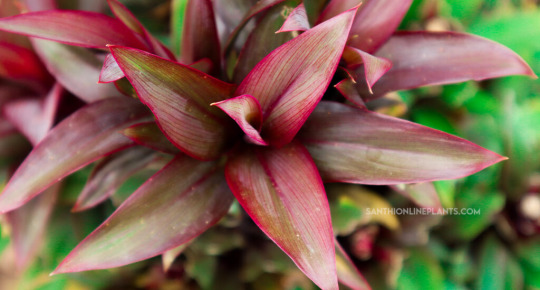
Benefits
The placement of ti -plant croton plant is believed to bring good luck, peace and positivity to home.
Cordyline Ti plants are pests & diseases resistant plants.
The most beautiful feature of this plant is the colorful foliage & air-purifier.
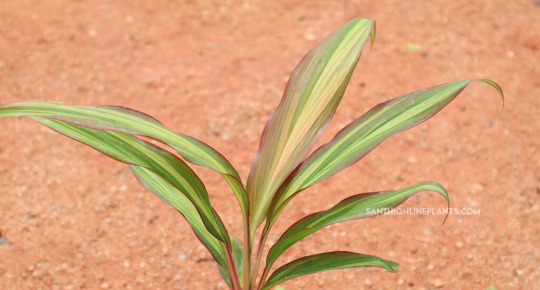
#Cordyline rumba#Andrea#Care & Maintenance#Soil#Watering#Sunlight#Propagation#This croton variety propagated through the methods such as Tip cuttings#Stem cuttings & Air-layering.#Tip Cuttings#From mature plants take the tip cuttings. Take tip cuttings from 3-4 cm of the plant. And plant the cutting in potting mix or soil.#Stem Cuttings#Placement#Repotting#Fertilizer#Dust Removal#Disease & Pest Control#These plant varieties do not contain major pests & diseases. The plant occasionally gets leaf spots#mealy bugs#spider mites#and scales are infected.#Benefits#The placement of ti -plant croton plant is believed to bring good luck#peace and positivity to home.#Cordyline Ti plants are pests & diseases resistant plants.#The most beautiful feature of this plant is the colorful foliage & air-purifier.#Cordyline fruticosa-ti plant crotons#Blog Completed By: Santhionlineplants
0 notes
Text
Master the Art of Growing the Kentia Palm (Howea forsteriana): The Ultimate Houseplant Guide
For those on a quest to find the perfect houseplant, look no further than the elegant Kentia Palm (Howea forsteriana). Famed for its aesthetic beauty and resilient nature, the Kentia Palm is a slow-growing, low-maintenance plant that can thrive even in less-than-ideal indoor conditions. With its feathery, arching fronds and tall, slender trunk, it brings a touch of the tropics into your home,…
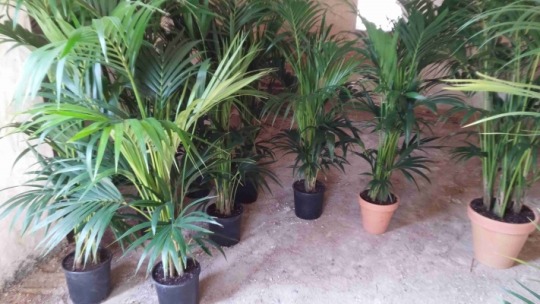
View On WordPress
#growing houseplants#houseplant#howea#indoor gardening#indoor tree#Kentia palm (Howea forsteriana)#low-light houseplant#palm#root rot#spider mites#tall houseplant#victorian#winter care
0 notes
Text
Spider Mites Treatment for Healthy Trees | Tree Doctor USA

Discover reliable Spider Mites Treatment methods provided by Tree Doctor USA. Safeguard your trees from these destructive pests with our expert solutions and maintain their health and vitality. Learn more now!
0 notes
Text
My fucking strawberries got mites and I had to cut it all back and start again 😩 😒 😫
0 notes
Text
Plant spotlight #1: The story of our Cape Gooseberry (Physalis peruviana)
Our’s lives mostly under the Almond tree.
Cape Gooseberry (Physalis peruviana) is a well loved plant that enjoys the conditions here in SA and providing us with a whole lot of fruit.
The famous Gooseberry fruit case.
As with so many things at Ligya Garden, we do things a little differently. Our Sun loving Cape Gooseberry plants grow in a lot of shade for most of the year however, from mid…
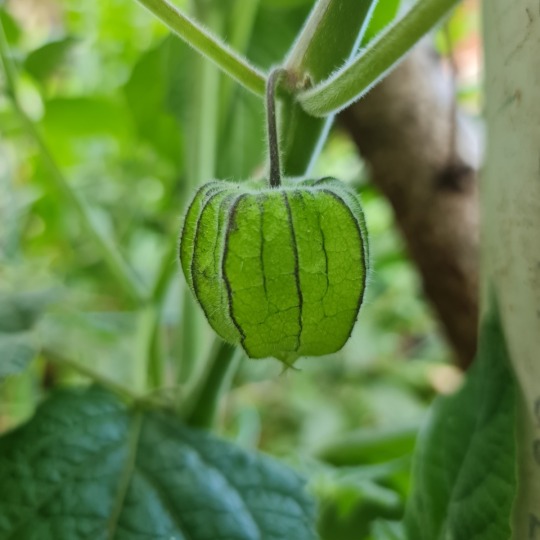
View On WordPress
0 notes
Text
March 3rd
Yellow!
That's how they say hello right? I saw it in a movie, I don't remember which though, 'cause all I could think of was the new greeting I had to address you guys!
Today the topic is houseplants! A wonderful way to spruce up your home and make it more colorful, no?
NO
Do you know what they really bring? Death and suffering!! Well, not death to me. But death to them because they are singlehandedly the hardest thing to take care of in this galaxy! The more plants I buy the more they die.... Ohh that rhymed maybe I should be a poet...
They wither and their last words they mutter,"if you had just....moved me 2 more inches....towards the sun...blehhh" and then they die.
Those greedy bunch. I never know what they want, and I suspect they don't know either. Just blaming it all on me and acting like they're the most priveleged bunch.
Well, you could argue they are considering they are the single lifeforce that keeps us breathing! But besides that they can't really complain. I'm trying aren't I?
I even gave them some friends and let my pet spider mites play on them. Oh well, poor me. I guess I wasn't meant to take care of plants.
1 note
·
View note
Text
How to get rid of spider mites cannabis

In this article, we'll cover how to dispose of arachnid vermin on plants. The best protection against bug parasites on plants is consistently safeguard estimates which we'll talk about more beneath.
Notwithstanding their minuscule size, insect vermin can cause a ton of harm. They are perhaps of the most widely recognized open air bother, with more than 1,200 unique species. Insect bugs feed on a very huge assortment of plants. Seeing bug vermin with the natural eye is almost unthinkable. This is the explanation they are for the most part not distinguished until after harm to the plants has been finished.
Bug parasites are a piece of the Tetranychidae family, and habitually seen all through North America going after both open air and indoor plants. You will frequently track down insect vermin on weed plants. Critical harm is normal in nurseries. Bug parasites are not a bug, but rather a sort of 8-legged creature. The bug vermin is connected with insects, scorpions and ticks. The 8-legged creature lives in provinces, most frequently tracked down on the underside of leaves.
Taking care of happens by puncturing the tissue of the leaves and sucking out the liquids in the plant. Bug parasites are generally found when the circumstances are dry, or bug sprays have been utilized in light of the fact that synthetic substances kill large numbers of their normal adversaries. The vast majority of the species is comprised of plant-taking care of vermin. Because of the fruitfulness of the species, when you see bug parasites on plants, there is a decent opportunity there is as of now an invasion.
Red bug vermin assault many plants in the nursery; however camellias and azaleas are gone after more regularly. There are two unique kinds of red insect parasites: The Southern red bug vermin and the European red bug with the Southern red being more normal. The European species is by and large found exclusively on apple trees. Figuring out how to distinguish and dispose of arachnid vermin is basic in light of the fact that each species can cause serious harm or killing the plant.
Motivations behind why bug parasites are hurtful to weed plants
The following are a couple of motivations behind why bug parasites cause issues for marijuana producers and harm weed plants.
The generation of arachnid parasites is exceptionally quick. 1,000,000 parasites can duplicate in an exceptionally brief time frame period for example under a month.
Insect vermin are minuscule to the point that they are difficult to notice and they have an exceptional capacity that they can become resistant to killing techniques and executioner showers.
Insect vermin feed on chlorophyll. They disturb the course of photosynthesis by obliterating chlorophyll and it can cause starvation; and in the long run demise of marijuana plants.
They can bring about a major pervasion in a brief time frame period. Because of webbing and high opposition very much like zombies, bug parasites can destroy the whole pot crop on the off chance that viable preventive measures are not taken in time.
Annihilation techniques to dispose of arachnid vermin
A drawn out approach is required to kill insect parasites totally from your weed crop. There exists different ways of forestalling their pervasion which are recorded as follows:
Utilizing natural fertilizer mulch/woman bugs
Natural fertilizer mulch includes savage bugs that eat bug parasites. Ladybugs are likewise notable for being regular hunters of arachnid bugs in such manner; they can kill bug parasites and are useful for weed plants.
Utilizing hard water shower
Utilize a water shower on weed establishes on numerous occasions straight following an everyday practice (for example 3 mornings reliably). Because of water pressure, insect parasites tumble to the ground and can't move. Absence of food can ultimately cause their passing.
Utilizing vacuum more clean
A handheld vacuum cleaner can suck the insect vermin straight off of marijuana leaves. It is a digit tedious cycle however it can eliminate bug vermin in a powerful manner. The advantage of this strategy is that all the lifecycle phases of the bug vermin will get designated by the vacuum cleaner.
Utilizing home-made killing arrangements
A combination of home-made arrangements like blending a spoon of blanch in a container of water or blending liquor in water, can assist in getting with freeing of arachnid vermin on marijuana plants.
What Causes Insect Bug Harm Resemble?
Insect Bugs on plants cause the accompanying harm:
Webbing
Whitish-yellow or tan spots on the needles and leaves
Yellowish staining with a tanned cast
Twisting of the leaves and blossoms
Minuscule red or white spots continuing on the leaves
Arbitrary white spots on the leaves
Leaves seem burned by the sun
Bug parasites have penetrating mouthparts they use to suck on the underside of the needles and leaves bringing about a yellowed staining. Assuming that there is webbing on the plants, there is a pervasion. To figure out how to dispose of arachnid bugs, understanding the distinction between an assault and dry season pressure is significant.
White, tan or yellow spots show up on the leaves. Small moving red or white spots are the parasites. Search for cottony white webbing on the underside of the leaves. A huge pervasion on sheet material plants or vegetables frequently brings about the demise of the plants.
The harm at first seen are white bits on the highest point of the leaves. The bits are so little, they don't draw the eye. This frequently makes the harm slip through the cracks. With the right climate, the harm can rapidly transform into an invasion. At the point when insect vermin feed, the whole items in the plant cells are killed.
The existence of the plant is depleted, bringing about dryness and staining. The leaves will ultimately fall, leaving the plant altogether debilitated. On the off chance that you don't make a quick move to battle and kill the bug parasites, your plants will ultimately pass on. The most widely recognized harm for vegetables including watermelons, melons and squash incorporates falling leaves bringing about burning by the sun and more modest yields.
Bug vermin on plants including beans and sugar peas bring about direct harm. Except if there is a pervasion, the harm on elaborate plants is insignificant. Bug parasites additionally assault roses.
0 notes
Text
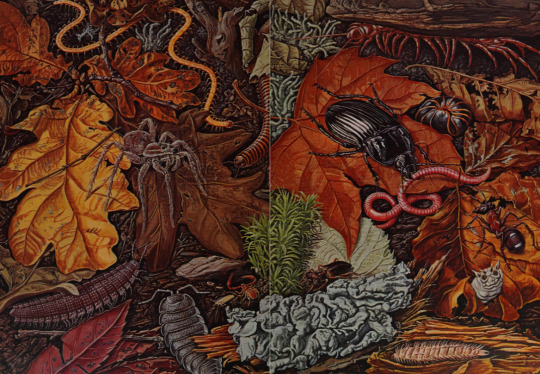
Grzimek's Animal Life Encyclopedia: vol. 2 - Insects. Written by Dr. Bernhard Grzimek. 1984.
Internet Archive

1.) Orchesella cincta
2.) Onychiurus sp.
3.) Campodea staphylinus
4.) Abax ovalis
5.) Notiophilus rufipes
6.) Penthetria holosericea
7.) Tipula scripta
8.) Red wood ant (Formica rufa)
9.) Geophilus sp.
10.) Brown Centipede (Lithobius forficatus)
11.) Polydesmus complanatus
12.) Julus sp.
13.) Glomeris marginata
14.) Pardosa palustris
15.) Nothrus silvestris
#bugs#springtails#two-pronged bristletail#insects#beetles#ground beetles#flies#march flies#crane flies#ants#red wood ant#centipedes#soil cenipedes#brown centipede#millipedes#pill millipedes#arachnids#spiders#wolf spiders#mites
429 notes
·
View notes
Text
my absolute worst hobby was when i got into making dollhouse furniture out of things i found in the woods. i went foraging nearly every day and accumulated a vast collection of acorns, pinecones, conkers, bark, twigs, moss and so on, and i didn't put them in boxes and nor did i wash them, so my room soon became infested with tiny bugs that had been living in the rotten wood and had come out to say hello. that sort of thing's fine when you are camping in the forest, but not so much when you're in a student flat and you need to get your security deposit back. anyway i think the theremin's probably quite inoffensive in comparison
#i once woke up to find a wood louse on my pillow#i like wood lice i think they're cute. but not in bed with me#lots of little spiders also and a ton of mites#wasn't worth it.
178 notes
·
View notes